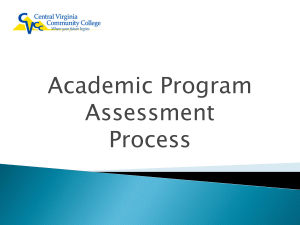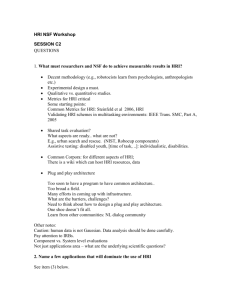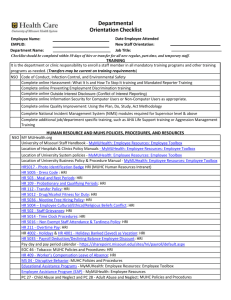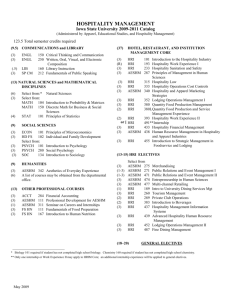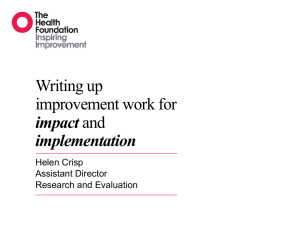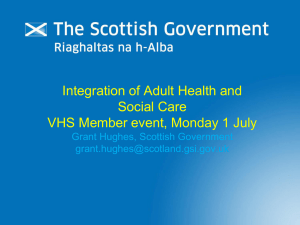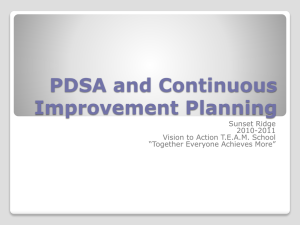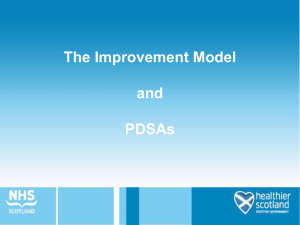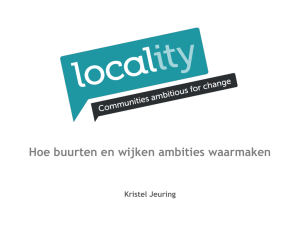LS 3 Storyboard Helping High Risk
advertisement
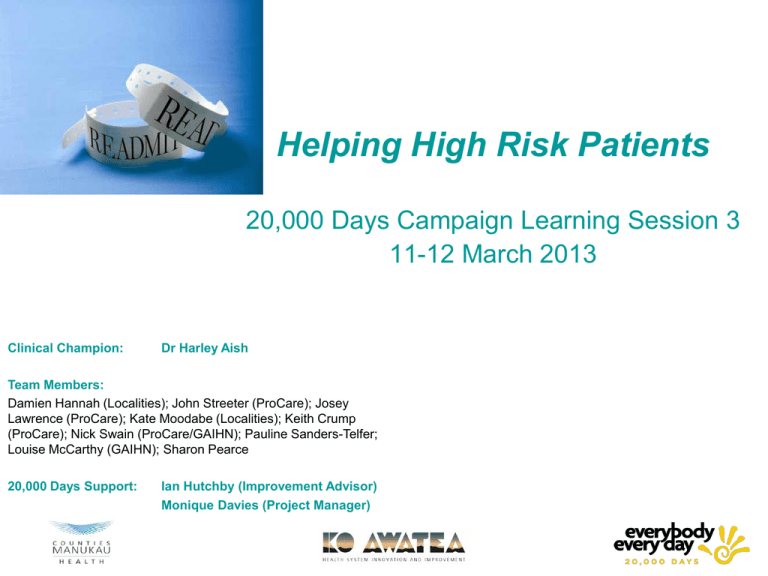
Helping High Risk Patients 20,000 Days Campaign Learning Session 3 11-12 March 2013 Clinical Champion: Dr Harley Aish Team Members: Damien Hannah (Localities); John Streeter (ProCare); Josey Lawrence (ProCare); Kate Moodabe (Localities); Keith Crump (ProCare); Nick Swain (ProCare/GAIHN); Pauline Sanders-Telfer; Louise McCarthy (GAIHN); Sharon Pearce 20,000 Days Support: Ian Hutchby (Improvement Advisor) Monique Davies (Project Manager) Our project will…. We aim to provide coordinated planned management of our identified high risk primary care patients reducing the demand for unplanned hospital admissions and bed days by 10% (1625 bed days) Our targeted intervention is the development of a locality based primary /secondary physician role based in primary care with a focus of supporting general practitioners to improve the management of high risk medical patients with long term conditions. This is underway through the Localities initiatives via our Strategic Project Management Office. • Long term goal of each primary care locality having a designated medical team with a primary/secondary care physician working between the services so that the clinical network relationship is built around the patient journey not dislocated at the point of admission and discharge • Improved management of patients identified with the PRM tool, who are at high risk of readmission as measured by reduction in predicted bed days • The development of physician clinics within primary care whereby the physician can review patient management with the primary care team and review specific patient care if appropriate • Improved and more appropriate referral to secondary care specialist services • Development of targeted continuing professional development for primary care teams Who are High Risk Patients?..... Patients discharged from Counties facilities are allocated a risk score. The PARR algorithm looks at discharges in the previous month and uses criteria such as age, gender, ethnicity, deprivation score, distance to hospital from the home, and the number of admissions in the last 12 months as well as the associated principal and secondary diagnoses. Based on these criteria, a risk score is allocated. This score gives a percentage chance, or probability, of an unplanned readmission for that particular patient within 12 months. The PARR scores for patients discharged in the previous month are sent to PHOs on the 5th day of each month. PHOs and practices then use the lists to identify patients who are both at high risk of readmission to hospital, and are amenable to treatment or other intervention. The cut-off score is currently nominated as 30%. Patients with a score of 30% or higher are classified as high risk. High Risk Patients - Their GP’s Location The following table groups high risk patients according to where their GP is located: High Risk Patients **Total Enrolments % of All High Risk Patients % of Total Enrolments in Locality Manukau 2,728 164,284 36% 1.7% Mangere/Otara 2,218 141,331 30% 1.6% Eastern 1,028 107,111 14% 1.4% Franklin 609 46,098 8% 1.3% Enrolled elsewhere 933 TOTAL 7,516 12% **Enrolments per PHO register as at 30 September 2012 Sharon Pearce: Counties Manukau Decision Support Ethnicity of our High Risk Patients Ethnic Group High Risk Patients % European 3,172 42% Pacific 2,185 29% Maaori 1,437 19% Asian 571 8% Other/Unknown 151 2% TOTAL 7,516 100% 48% of HR patients are of Maaori or Pacific ethnicity Sharon Pearce: Counties Manukau Decision Support Driver Diagram Change Packages Secondary Drivers (Theory of change) Change Ideas Tested (describe process) Communication of HRI lists to GP Practices Individual patient lists or combined HRI practice lists? Working with GPs to gauge their preference for patient individualised reports or combined HRI Practice lists Practice Readiness for HRI interventions Practice Readiness Survey (selected Manukau GP Practices) Survey of ProCare practices to gain an understanding of their use of the risk reports and how they are focusing care on HRIs, what additional resources they would find useful and if they wished to take part in further PDSA testing Automation of risk score from DHBs to be provided monthly Manual process at present, Waitamata DHB automating and CM and ADHB to follow Predictive Risk Modelling Flow Chart Categories for Triage of HRI Most Successful PDSA Cycles? • PDSA: Otara GP Practice The Otara GP practice nurses completed a (VHIU) RAG assessment with 11 of the 23 HR patients identified for their practice in the previous month. The PDSA prediction found to be correct, 50% of patients were amenable to an intervention. Next PDSA: to repeat using the Trigger Tool in conjunction with the RAG form. Ask if VHIU for assistance with training in methodology for the nurses • PDSA: GPs doing the Identification of Contributors (Condition complexity, self management, palliative care, social determinants, mental health, other) Measures Summary - Measures related to Aim Graphs of key measures Which of your run charts would you give to senior leadership to use? Include Collaborative Dashboard Ian? Primary Care Interventions for High Risk Individuals – Pilot • Primary Care Interventions for High Risk Individuals – Pilot • Summary This pilot is intended to support Primary Care in the management of High Risk Individuals through a suite of extended interventions and when required, co-ordination with secondary support and allied health services. The intention is to strengthen Primary Care as a patients ‘home-base’ where required services outside of a practices resource can assist in the management of care. Locality SMO’s and MDT expertise will be available for case conferences on a regular basis. There will be funding and invoicing support to assist in the process of care planning. Pilot Practices – TBC HRI Definition 20,000 per locality ≥ 30% risk of re-admission (PARR Report) Pilot Purpose To increase management capability of HRI’s in the Primary Care setting. To develop an HRI intervention tool with GP’s to include services outside what available in the current funding structure Increased access to services in a timely manner, which is appropriate for HRI care planning. To provide funding support and management mechanism for invoicing. Pilot Objectives To develop an intervention tool appropriate to the HRI needs. To strengthen Primary Care as the ‘home’ healthcare provider with patients. Increase access to necessary services in a timely manner with funding support. • • • Start Date: March, 2013 Timeframe: 12-18 months Achievements to date Now meeting weekly at ProCare, Grafton The group have been meeting weekly since the last learning session and this has enabled us to progress our work and PDSA cycles Better management of high risk individuals (HRIs) –the current situation? A Predictive Risk Algorithm (PRM) tool has been developed for patients at high risk of admission to hospital. Phase 2 which is underway at present, is looking to revise the algorithm incorporating primary care data which has shown to improve its predictive power The monthly PRM risk stratification reports are being sent from the three DHBs to all PHOs and reports of High Risk Individuals (HRIs) are delivered monthly to Procare Practices. The group are working on PDSAs on the formatting of the reports (i.e. individual vs practice lists) possible interventions areas and practice acceptance and readiness for provision of interventions for HRIs Next Steps? Work with Decision Support Services to establish automation processes Enhanced integrated care for high risk individuals - developing the intervention model Progressing HRI pilot development with the Strategic Project Management Office, 2 GP practices per locality, practices have been identified via the locality managers and DHB for implementation of prototype service, with project brief completed
